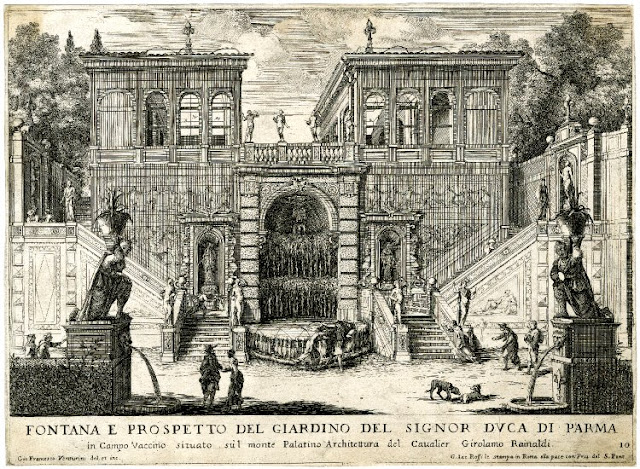 |
| Gerard ter Borch Young woman dressing, with maid 1650-51 oil on panel Metropolitan Museum of Art, New York |
 |
| Jacob Ochtervelt The love letter ca. 1670-72 oil on canvas Metropolitan Museum of Art, New York |
 |
| Jacob van Velsen Musical party 1631 oil on panel National Gallery, London |
"In the mid-nineteenth century, attempts were made to fix the speed of light. Using mirrors, prisms, spinning disks, it was found that light traveled not infinitely fast, but at an invariant speed of approximately 186,000 miles per second. Light and a projection take a finite time to get from site of generation to site of reception."
 |
| Gerard ter Borch The concert ca. 1675 oil on panel Staatliche Museen, Berlin |
 |
| Hendrick Cornelisz van Vliet Interior of the Oude Kerk, Delft, with tomb of Piet Hein 1652-53 oil on panel private collection |
 |
| Jan Verkolje the Elder The Messenger 1674 oil on canvas Mauritshuis, The Hague |
"Expanding from this discovery, the German scientist Felix Eberty postulated all of space as a universal archive of all that had happened on earth. The light of every event was moving out from the earth at a speed of 186,000 miles per second. If one was at the right point in space, one could see any event that had happened. Near a star 2,0000 light years away, one could see Pontius Pilate washing his hands, Luther could be seen nailing his 95 theses up on the church door at Wittenburg. Felix Eberty took all his examples from the scriptures. His father, one Abraham Ephraim, had converted from Judaism to Lutheranism."
 |
| Johannes Vermeer Seated woman drinking, with man standing ca. 1658 oil on canvas Staatliche Museen, Berlin |
 |
| Pieter de Hooch Card players at a table 1670-74 oil on canvas private collection |
 |
| Hendrick Pot Vanity ca. 1633 oil on panel Frans Halsmuseum, Haarlem |
"Every action, heroic or shameful, was there to be seen. Every secret deed was visible. There is something terrifying in this. Once launched, an image, an event, a discus, cannot be called back. It has the pressure of perfect memory. It has the same inevitability as the claim that no keystroke is ever lost, that once done, something cannot be undone. The email cannot be unsent. Every foolishness is there, every embarrassment. The universal archive becomes also an overstocked, miserable collection of surplus images. We are caught between wanting to send ourselves out and to hold back, to call back, to annul and obliterate so many traces and acts."
 |
| Gerard ter Borch Paternal admonition 1654 oil on canvas Rijksmuseum |
 |
| Caspar Netscher The seduction 1664 oil on canvas private collection |
 |
| Gerard ter Borch The suitor's visit 1658 oil on canvas National Gallery of Art, Washington DC |
"The air is thick with images – time made dense with each event and its image, a soup, a fog, as if one could take a sheet of paper and swing it through the air, catching the images as they crashed into it. A swing of the arm above our head to catch the images from us, moving outward, or a low pass to catch those images coming in."
 |
| Eglon van der Neer Lady washing hands ca. 1675 oil on panel Mauritshuis, The Hague |
 |
| Pieter de Hooch Man reading a letter to a woman ca. 1670-74 oil on canvas Kremer Collection |
 |
| Gerard ter Borch Curiosity ca. 1660 oil on canvas Metropolitan Museum of Art, New York |
– quoted passages are from Six Drawing Lessons by William Kentridge (Harvard University Press, 2014)










































